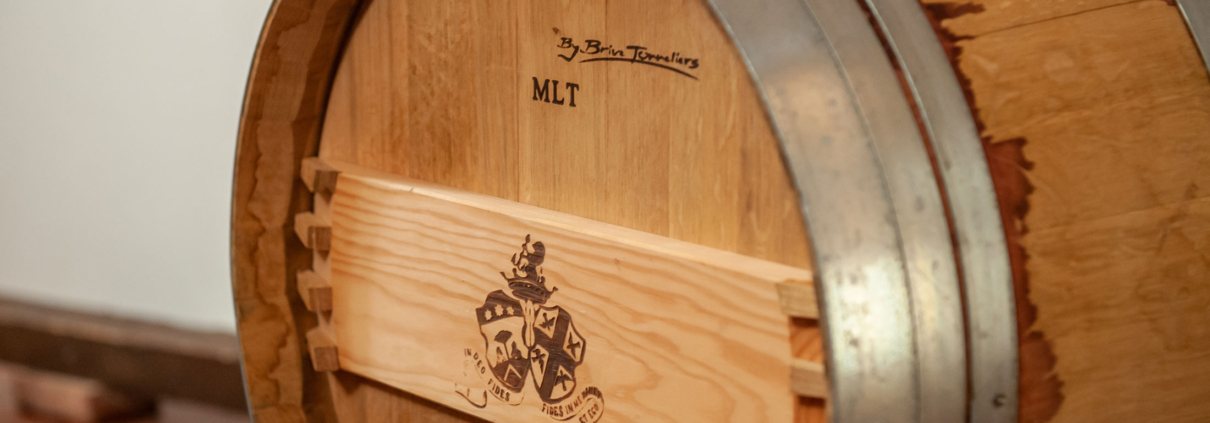WHAT HAPPENS IN THE CELLAR IN June
The beginning of June is characterized by the rapid growth of vines, so it is necessary to intervene in the vineyard to maintain the harmony of space between the vines and the future clusters that are forming. Therefore, the first cleaning is carried out and the first stabilization of the vines upwards is performed to allow the air to circulate, thereby avoiding the creation of an environment favorable to the development of fungal diseases. The month of June announces, in our latitudes, the flowering and fruit set of the vine, where you can see the first clusters forming. The transformation of the flower begins, which until then was covered and enclosed by the structure that protected it from the outside. The flower opens and is fertilized, thus the transformation into a grape occurs. This is the fruiting stage, the most exciting moment for those who love plant physiology and biology, and also a very delicate time for the vine where adverse weather conditions, such as rains, persistent humidity, very strong winds, or even fungal attacks can damage and therefore reduce the quantity of transformation from flower to fruit, creating the phenomenon of coulure.
After this period, the vine grower hopes for a clement climate, that is, the beginning of a drier period with a good water availability. With the onset of the warmer period, the vines can extend their leaves until reaching the 12/13/14 leaves that are the necessary quantity to obtain the photosynthetic surface adequate for the development of the berries.
At this moment, the only operations that we perform, as Usiglian del Vescovo, are a second round of green cleaning for the closing of the vines and their maintenance in a vertical position, and we do not intervene unless after every rain that can be infectious, i.e., every time that weather conditions are created for pathogens, such as downy mildew, to develop.
In the month of June, it is also mandatory to carry out an insecticide treatment against an insect, the Scaphoideus titanus, which is the vector of Flavescence dorée, one of the biggest scourges of European viticulture in recent years. Fortunately, in organic farming, there are organic products that can be used, and at the end of June we carry out this treatment to try to limit the spread of this disease, which is particularly serious and to which chardonnay is particularly sensitive.
To try to contain the problem of the Scaphoideus as much as possible, we also treat the perimeter areas of the vineyard with organic products, such as mustard extracts and nettle macerate, to make even the external plants less hospitable to insects.
We are increasingly expanding the quantity of products that have a biostimulating action on plants obtained from macerates or ferments of wild or cultivated plants and produced in Tuscany, and part of these plants we grow ourselves. Indeed, we are trying to implement the circularity of this defense economy so that we are the producers of part of the raw materials that are delivered to a company in Tuscany that distills them, ferments them, makes them active for plant defense, metabolic stimulation, immune defenses of the plant, and we reuse them to defend our vineyards.
We really like this journey because it is our approach to try to minimize the impact on the environment. Among other things, these medicinal plants are all crops with very low water requirements, and so here too we try to reduce our water consumption in the national balance even further.
The end of the month of June is one of the most critical moments in the defense of the vine in our latitudes, especially in Tuscany and in our vineyards where we have a very varied natural environment. We have a significant presence of woodland that creates a basin of inoculum of fungi such as powdery mildew, and in this season our goal is to be able to keep the vineyard environment hostile to the development of powdery mildew. To do this, we intervene with the removal of some leaves to maintain high air circulation around the cluster while protecting it from direct solar irradiation, we use rock-based preparations, and we use plant ferments that help limit the development of this fungus, along with the classic sulfur that is used in these circumstances.
This post is also available in: Italian







Leave a Reply
Want to join the discussion?Feel free to contribute!